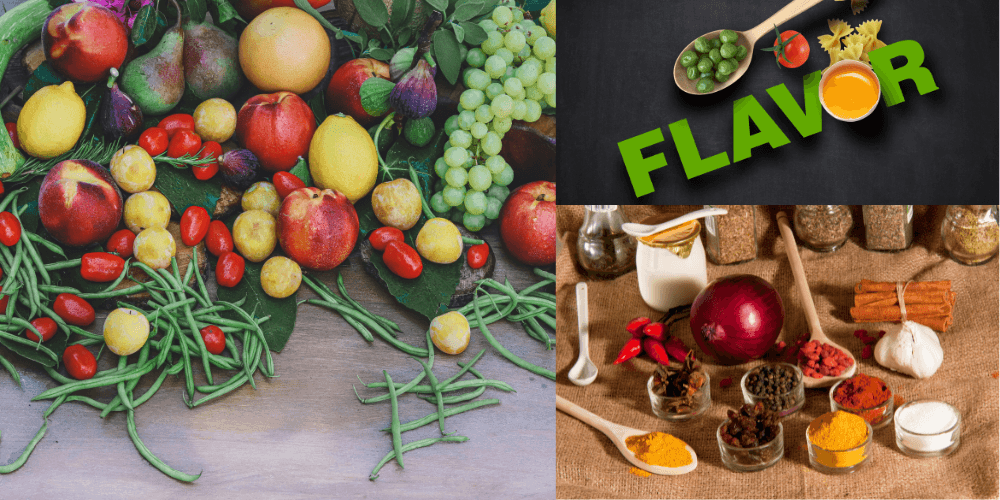Introduction
Have you ever wondered why a perfectly ripe strawberry tastes so heavenly or why a pinch of salt can transform a dish? The world of taste and flavour is a fascinating interplay of science and sensation. In this post, we\’ll unravel the mysteries of how we perceive taste, the intricate workings of our taste buds, and the surprising role smell plays in our culinary experiences. We\’ll also share some tips and tricks to elevate your cooking and dining adventures.
The Basic Tastes
Our taste buds are remarkable sensory receptors that allow us to distinguish between five fundamental tastes:
- Sweet: This is our body\’s way of recognizing energy-rich foods like fruits and honey.
- Salty: This taste helps us maintain electrolyte balance and is triggered by sodium chloride (table salt).
- Sour: This taste detects acidity and can be found in citrus fruits and fermented foods.
- Bitter: This taste serves as a warning system for potentially harmful substances, like many plant toxins.
- Umami: This savoury taste, often described as \”meaty\” or \”brothy,\” is triggered by glutamate, an amino acid in foods like Parmesan cheese, tomatoes, and mushrooms.
How Our Taste Buds Work
Our tongues are covered in tiny bumps they are called papillae, which house our taste buds. Each taste bud contains 50-100 taste receptor cells. When we eat, food molecules dissolve in our saliva and interact with these receptors. This triggers signals that are sent to our brains, where they\’re interpreted as different tastes.
The Role of Smell in Flavor Perception
While taste buds detect basic tastes, our sense of smell is responsible for a much more comprehensive range of flavour nuances. When we chew, volatile compounds from our food are released and travel through a passage at the back of our throat to our nasal cavity. Here, they interact with olfactory receptors, adding layers of complexity to the flavours we perceive.
Tips and Tricks for Enhancing Flavor
- Layering Flavors: Don\’t just rely on one taste. Combine sweet, sour, salty, bitter, and umami elements for a well-rounded flavour profile. For example, a salad with sweet fruit, salty feta, bitter greens, and a vinaigrette with a touch of sourness will be more satisfying than one with just lettuce and dressing.
- Contrasting Textures: The way food feels in our mouths greatly influences our perception of flavour. Pair crunchy elements with creamy ones or smooth textures with something a bit chewy. Think of the textural contrast between a crispy fried chicken skin and the tender meat underneath.
- Herbs and Spices: These culinary powerhouses add depth and complexity to dishes. Experiment with different combinations to find your favourites.
- Heat and Acidity: A touch of heat from chilli peppers or a squeeze of lemon juice can brighten and intensify flavours.
- Salt: Used judiciously, salt enhances sweetness and suppresses bitterness, bringing out the best in many ingredients. But be careful not to overdo it!
- Fresh Ingredients: Whenever possible, opt for fresh, high-quality ingredients. They simply taste better.
- Umami Bomb: Add a touch of umami to your dishes with ingredients like Parmesan cheese, soy sauce, fish sauce, or mushrooms.
- Rest and Marinate: Allowing flavours to meld through resting or marinating can significantly improve the final result.
Conclusion
Understanding the science of taste and flavour can transform your relationship with food. By appreciating the interplay of basic tastes, the role of smell, and the impact of texture, you can create culinary experiences that are truly unforgettable. So go ahead, experiment in the kitchen, and savour the delicious results!
Disclaimer
The information in this blog post is designed to share knowledge and spark your culinary curiosity. It\’s not intended as a replacement for personalized advice from health professionals. If you have specific questions or concerns about your diet or health, please seek guidance from a qualified expert.
Additional Tips for Exploring Flavor
- Taste Everything: Don\’t be afraid to try new foods and flavour combinations. You might be surprised by what you discover.
- Engage Your Senses: Notice your food\’s aromas, textures, and colours. It can enhance your overall experience.
- Eat Mindfully: Slow down, savour each bite, and consider the different flavours and sensations.
- Have Fun! Cooking and eating should be enjoyable. Don\’t be afraid to experiment and have fun in the kitchen.


